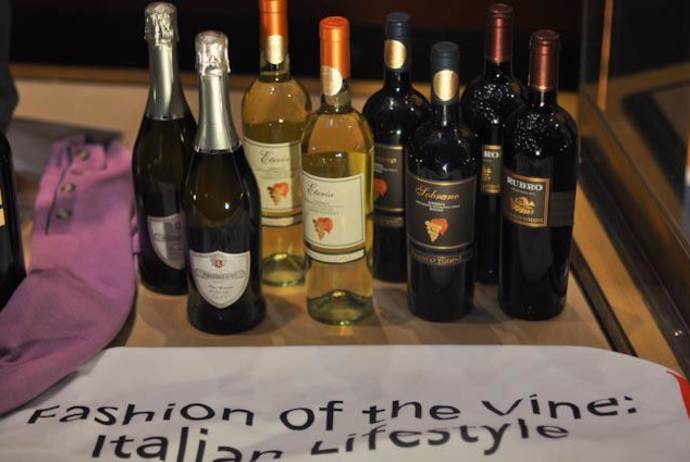If you are ever lucky enough to hear Vincenzo Castellana play, you can justly claim you know him, because Vincenzo is music, and music is Vincenzo.
Vincenzo’s music is a lot more than simple notes craftily placed together to create a pleasant sound. His music is a vehicle for emotions emanating from within him. Music is a door to his world that invites anyone reached by its notes to enter and discover it. I entered through it sometime last fall, attracted partially by his music but more so fascinated by this young individual and his unusual passion. His music is as far from pop as possible and as unusual as the instruments he plays. He is wholeheartedly devoted to Sicilian Folk music and this devotion oozes from every note he plays and every tune he sings.
So what attracts a young man to folk music? How did he learn to play instruments some never know exist? What makes him so passionate about it? The questions are numerous. Over the course of a few months I corresponded with Vincenzo on regular basis and conducted a few video-interviews over Skype. It is impossible to recount everything I learned about him and his passion in this short article, so consider this an introduction.
Born in the capital of Sicily, Palermo, Vincenzo spent his childhood in its provincial town of Caltavuturo. It is there that he had his first encounter with the Sicilian tambourine, introduced to him at the age of five by the local shepherds. Little did he know that this instrument would play a huge part in his life, as it slowly became an extension of him. Fervent about Sicilian music even at this early age he was noticed and recruited by a folk group Gazzara, with which he performed live for the first time at the age of six. To this day he remains part of the group and with them he toured almost all of Europe.
Vincenzo acquired a completely new understanding of the power and potential of the Sicilian tambourine through a meeting and subsequent formation of a friendship with a known Italian musician, Alfio Antico. Studying under his guidance awakened a vibrant interest in the research of traditional percussion instruments of the world.
His ardent admiration of the Sicilian tambourine and other traditional instruments such as the fiscalettu, brogna or the marranzanu, carried him on multiple adventures and allowed him to collaborate with prestigious musical formations, to name a few: Ensemble Engyon, Compagnia di Tirammu, Gruppo Terra and Beati Paoli. He also remained an active musician of Taberna Mylaensis, with which he performed and traveled, eventually contributing to their latest album.
While studying at the University of Palermo (D.A.M.S. di Palermo), he got the chance to interact with the greatest interpreters of Sicilian folk music of the last half of the century. His theses focused on the phenomenon that has affected the musical life, especially of young people in Sicily in the sixties and seventies, a phenomenon that is more generally framed in global movement that can be described as the revival of folk music. This academic work has led him to collaboration with several artists world famous musicians, among them Claudio Baglioni, Gianni Morandi and the word renown Ennio Morricone, all of whom appreciated Vincenzo’s artistic and musical qualities.
What is probably the most striking about Castellana is that he is determined to make a living as a musician and one of who is not swayed by fashion and trends of today’s musical scene. He is dedicated wholeheartedly to his native Sicily and its folk music. “My passion for Music and the Arts is a central thread in my life. I found myself composing music and creating artistic productions with anything that found its way into my hands” says Vincenzo of his ways to make a living as an artist. He has moved to Holland to pursue his dream of being a musician, as he finds Amsterdam to be a less limiting in possibilities of achieving his goal.
He continuously performs with various musical groups, as well as leads courses for the tambourine in the hope of transmitting his knowledge to future generations in order for Sicilian folk music to stay always alive. He travels to discover the world and get to know and interact with people from diverse backgrounds and cultures. “Music is a language in itself. It erases borders and limitations between people. It brings positive energy to everyone, and that is my way of communicating with the world. There is nothing more satisfying that to be able to give someone joy by singing to them or playing a piece especially dedicated to them” - elaborates Castellana.
On one of his adventures he came across Michela Musolino, a singer and performer, but most of all a friend that shares in Vincenzo’s passion and love for Sicilian folk music. The two have formed a group called AcquAria and they have been performing together in numerous American venues. The response to their music is magical. It isn’t something that I can explain or relay here in words. It is something that each and everyone need to experience on their own. It is with a great pleasure that I announce AcquAria’s North Atlantic Concert Tour, which will begin on October 12th in the town of Mystic, CT.
Tour Dates and Venues:
October 12 - Mystic Seaport, Mystic CT
October 14 - Crossroads Music, Philadelphia PA
October 18 - Italian heritage Festival, Howard Beach Public LIbrary, Queens NY
October 20 - Common Fence Music, Portsmouth RI
October 21 - Woods Hole Folk Music Society, Woods Hole, MA
October 23 - York CUNY, Jamaica NY
October 24 - Horses SIng None of It , NJ Folk Project






































